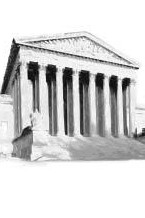GODOT’YU BEKLERKEN VE BECKETTVARİ ABSÜRT ANLATIM
Bu çalışma, şimdiki zamanda boşluk hissine kapılan ve bu boşluğu doldurmak için bir kurtarıcı hayalını kuran insanların algısını sorgulamaktadır. Bu konu, Samuel Beckett’in Godot’yu Beklerken drama oyununu vasıtasıyla ve sonuçsuz görünen insanlığın dramatik durumunu—düşündürücü ve sembolik biçimde—soyut olarak sergilenmektedir. Beckett’in derin sessizliğe bürünmüş anlatım biçimi, sahnenin ötesinde yüzeysel bir Beckettvari tiyatro deneyimdir. Bu yeniden başlamaya dönük saf gaye, değişime karşı muhtemel duygusallığı bir kenara itmektedir. Başarısız anlatım biçimi olarak bilinen tutarsızlık, kopukluk ve süreksizlikten faydalanan Beckett, Godot’yu Beklerken eserinde, kavramsallaştırılmış yaşamın ötesinde, insanlığa dayanışma mesajını sunmaktadır. Evrensel yozlaşının habercisi olan Beckett, insanın uçarı bir yaşam içinde insanlık dışı ilişkilerini teşhir etmek için, yaratıcılığını kullanmaktadır. Beckett, toplumları anlamlı temeller vasıtasıyla eşitliyerek, günümüzde tutunmak için mücadele eden herkesin sorunlarını tasvir etmektedir. Varoluşun absürtlüğünü tasvir eden Beckett, drama vasıtasıyla, felsefi absürt ve devamlılığın belirliliğini, sorgulayarak, sergilemektedir.
Anahtar Kelimeler:
Godot’yu Beklerken, Samuel Beckett, Absürt Tiyatro, Absürt, Anlatım
The Beckettian Narration of Absurdity in Waiting For Godot
This study questions whether the hollow of muddy people with a hollow and hope for a savior in the current state of the world is significant. The debate polls a thought-provoking result for the purview of no end in sight through a query of the drama play, Waiting for Godot by Samuel Beckett, which abstractly demonstrates a symbolic situation of humanity dramatically. Beckettian theater, deeply immersed in the constant silence of Beckett’s narration, is a shallowed experience beyond the stage. Following the pure consummation of Beckett, a twirl for a resumption is potentially tossing aside the sentimentalization of looking backward. Waiting for Godot comprises a message of solidarity of human beings by keeping a loof the conceptualization of a life that is no longer portrayed in the failed form of narration boundaries due to the lack of coherence, rupture, and discontinuity. Beckett, the messenger of universal degeneration, assigns ingenuity to expose human beings’ inhuman relations in a frivolous life. He equalizes societies with meaningful essentials and portrays the problems of anyone struggling to get a foothold today. Imaging the absurdity of existence, he demonstrates philosophical absurdity and questions a continuous perpetual certainty in the realm of drama.
Keywords:
Waiting for Godot, Samuel Beckett, Theatre of Absurd, Absurdity, Narration,
___
- Ackerly, C. (2004). Perfection is not of This World: Samuel Beckett and Mysticism. Mystics Quarterly, 30 (1-2), 28-55.
- Adorno, T. W. (1997). Aesthetic Theory. Athlone Press.
- Beckett, S. (2016). Waiting for Godot. Faber and Faber Ltd.
- _________. (1983). Disjecta. Ruby Cohn, ed. John Calder.
- Bénard, J. (018). The Capital of the Ruins by Samuel Beckett: Re-construction as a ‘Re-distribution of the Sensible’, Études britanniques contemporaines, 54, DOI : https://doi.org/10.4000/ebc.4282.
- Bizub, E. (2014). Sounds, Sense and Signature: Beckett’s Swerving Identity. Comparative Studies in Modernism, 5, 47-57.
- Bryden, M. (1998). Samuel Beckett and the Idea of God. Macmillan.
- Butler, L. St J. (1984). Samuel Beckett and the meaning of Being: A study in ontological parable. Palgrave Macmillan.
- Calderwood, J. L. (1986). Ways of Waiting in Waiting for Godot. Modern Drama, 29, 363-375. https://doi.org/10.3138/md.29.3.363.29-43.
- Camus, A. (2013). The myth of sisyphus. (J. O’Brien, Trans.). Penguin Books.
- Esslin, M. (1983). The Theatre of the Absurd. 3rd ed. Penguin Books.
- Gibson, A. (2010). Samuel Beckett. London: Reaktion Books Ltd.
- Gordon, L. (2002). Reading Godot. Yale University Press.
- Graver, L. (2004). Samuel Beckett, waiting for godot. Cambridge University Press.
- Kamyabi M., Ahmad, B., Jean-Louis, Eugène I., & Samuel B. (2002). Conversations with Samuel Beckett, Eugène Ionesco and Jean-Louis Barrault about theater. Namayesh.
- Kenner, H. (1973). A Reader’s Guide to Samuel Beckett. Farrar, Straus.
- Levy, E. P. (1980). Beckett and the Voice of Species: A Study of the Prose Fiction. Gill and Macmillan.
- Mcmullan, A. (2008). History in Tatters: Bodies and Things in Samuel Beckett’s Theatre. Études britanniques contemporaines, 35, DOI : https://doi.org/10.4000/ebc.5953.
- Malekin, P. & Yarrow, R. (1997). Consciousness, Literature and Theatre: Theory and Beyond. Macmillan.
- Mansouri, S. (2015). The Lie of the Land: Irish Modernism in a Nativist Ireland. Studi Irlandesi. A Journal of Irish Studies, 5(5), 183-205. https://doi.org/10.13128/SIJIS-2239-3978-16345.
- Rahimipour, S. (2020). Dramatic Entropy and Self Ambiguity in Samuel Beckett’s Works via the Framework of Choas Theory. [In Persian]. Journal of Language Teaching, Literature & Linguistics (JLTLL), 3(2), 27-46. doi: 10.22034/jltll.v3i2.58.
- Reid, A. (1962). “Beckett and the Drama of Unknowing.” Drama Survey, 2 (autumn), 130-138.
- Roberts, J. L. (1980). Waiting for Godot & Other Plays. Hungry Minds, Inc.
- Rybińska, K. (2017). The Absurd as a Representation: Towards a Hermeneutics of the Inexplicable (The Problematic Case of Godot). Studia Anglica Posnaniensia, 51(4), 67-86. https://doi.org/10.1515/stap-2016-0020.
- Sollars, M. D. (2013). Kafkaesque Absurdity in the Aesthetics of Beckett and Giacometti. ENTHYMEMA, 8, 71–82. https://doi.org/10.13130/2037-2426/3041.
- Stace, W. T. (1960). Mysticism and Philosophy. Macmillan.
- Taghizadeh, A. & Soltani, G. M. (2016). The double position of waiting for godot. Rupkatha Journal on Interdisciplinary Studies in Humanities, 8(3), 105–117. https://doi.org/10.21659/rupkatha.v8n3.13.
- Uchman, J. (2012). Crossing the Borders of Language and Culture: Samuel Beckett’s Waiting for Godot. Text Matters: A Journal of Literature, Theory and Culture, 2, 46–61. https://doi.org/10.2478/v10231-012-0054-7.
- _________. (2018). Blindness in the Beckettland of Malfunctioning. Text Matters: A Journal of Literature, Theory and Culture, 8, 122–136. https://doi.org/10.1515/texmat-2018-0008.
- Yayın Aralığı: Yılda 2 Sayı
- Başlangıç: 2002
- Yayıncı: Bursa Uludağ Üniversitesi
Sayıdaki Diğer Makaleler
Toplum Sözleşmesi Teorilerine Hegel’in Eleştirisi
Yeni Türk Sinemasında Değer Arayışları: Değer Yaratmak ya da Bunun İçin Uygun Koşulları Oluşturmak
Filozof, Sezar ve İsa: Nietzsche’de Egemen Olarak Geleceğin Filozofu
Bağışlamanın Olanağı: Aristoteles versus Derrida
Eda ÇAKMAKKAYA, Işıl BAYAR BRAVO
Felsefe Tarihi Araştırmalarında Kullanılan Dijital Araçlar ve Metotlar
Eşitlik Aksiyomu: Jacques Rancière’in Demokrasi Tahayyülü
GODOT’YU BEKLERKEN VE BECKETTVARİ ABSÜRT ANLATIM
Doğudan Batıya Yeni Bir Işık: Ortaçağ’da İspanya Astronomisinin Değişimi ve Dönüşümü
